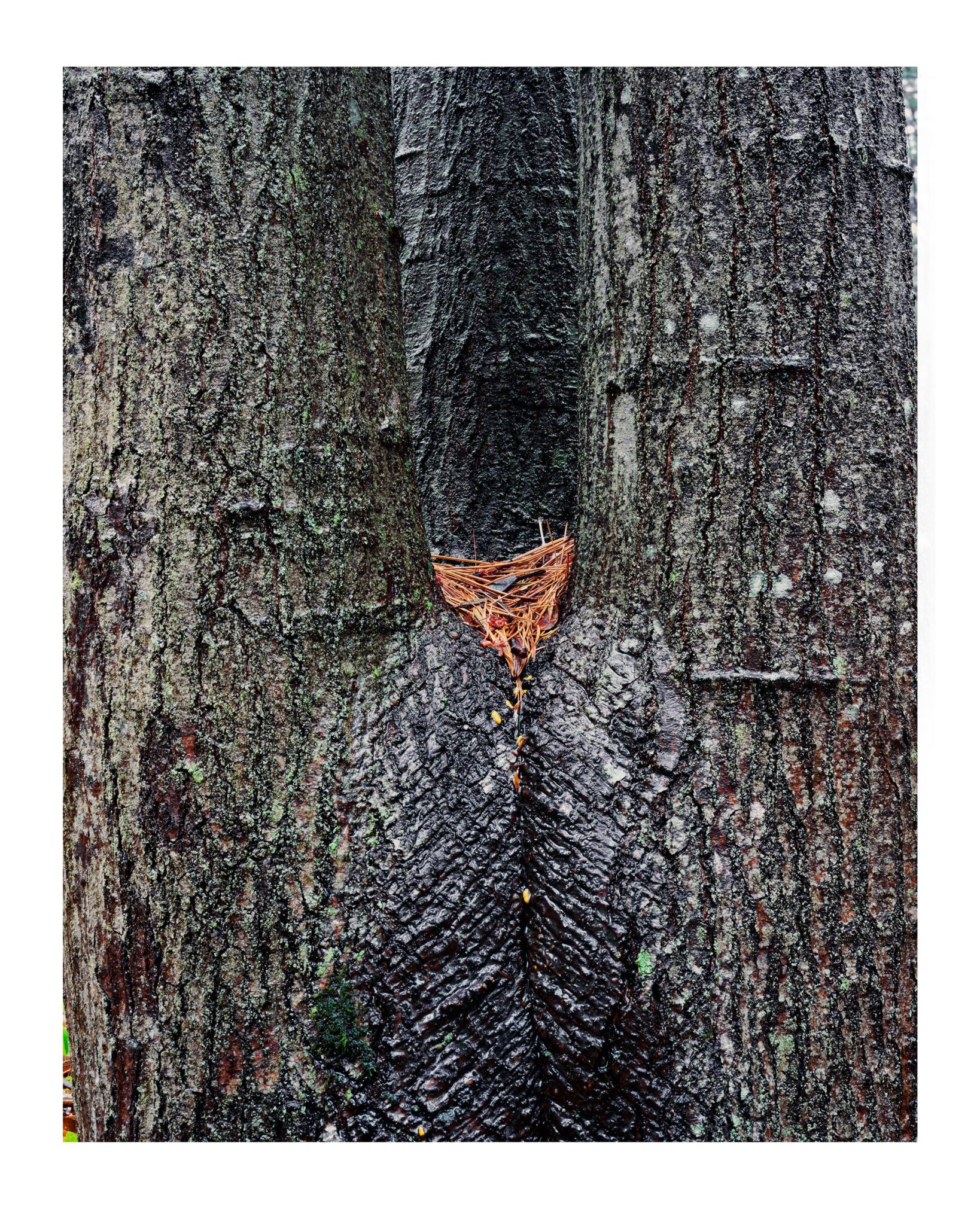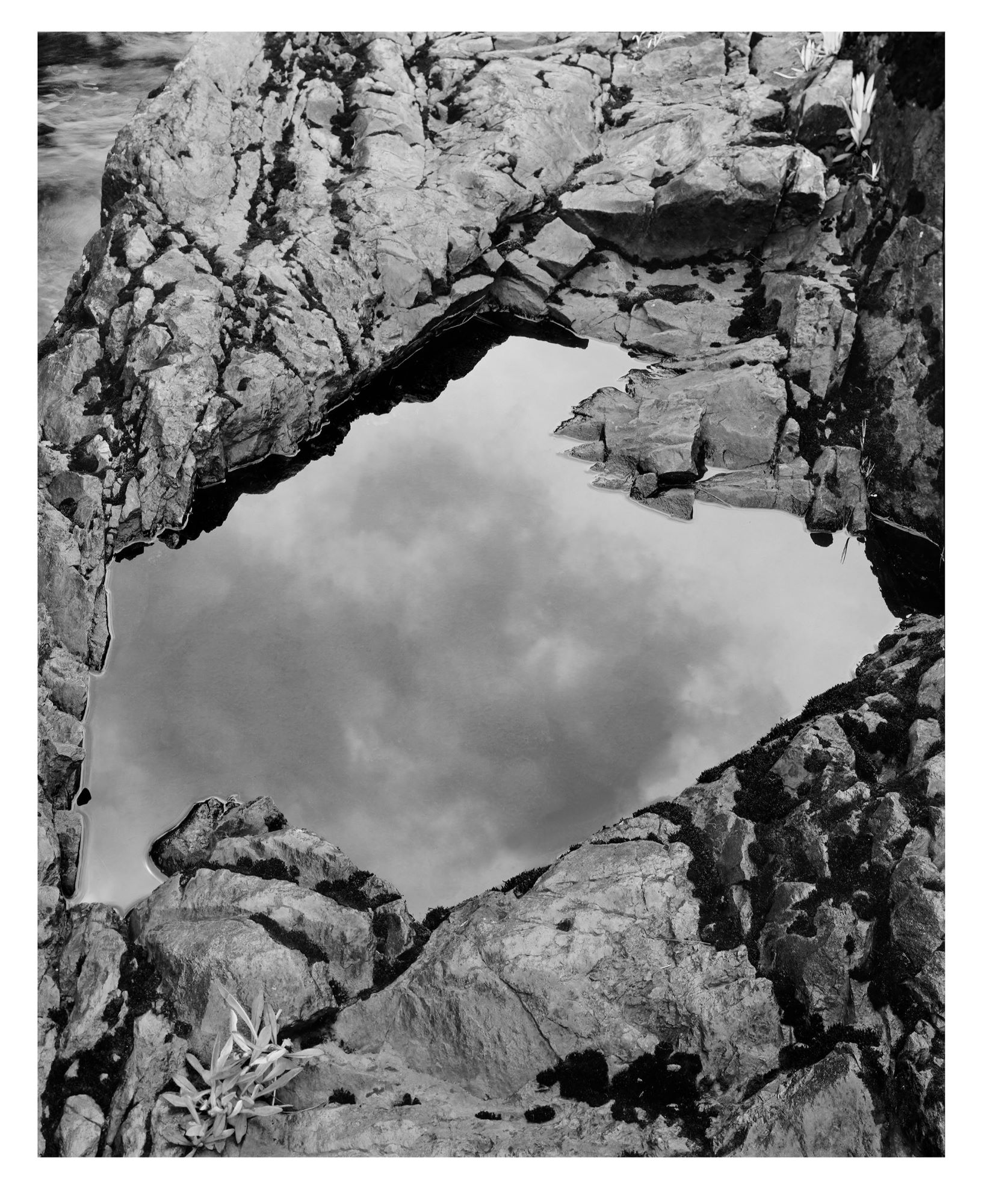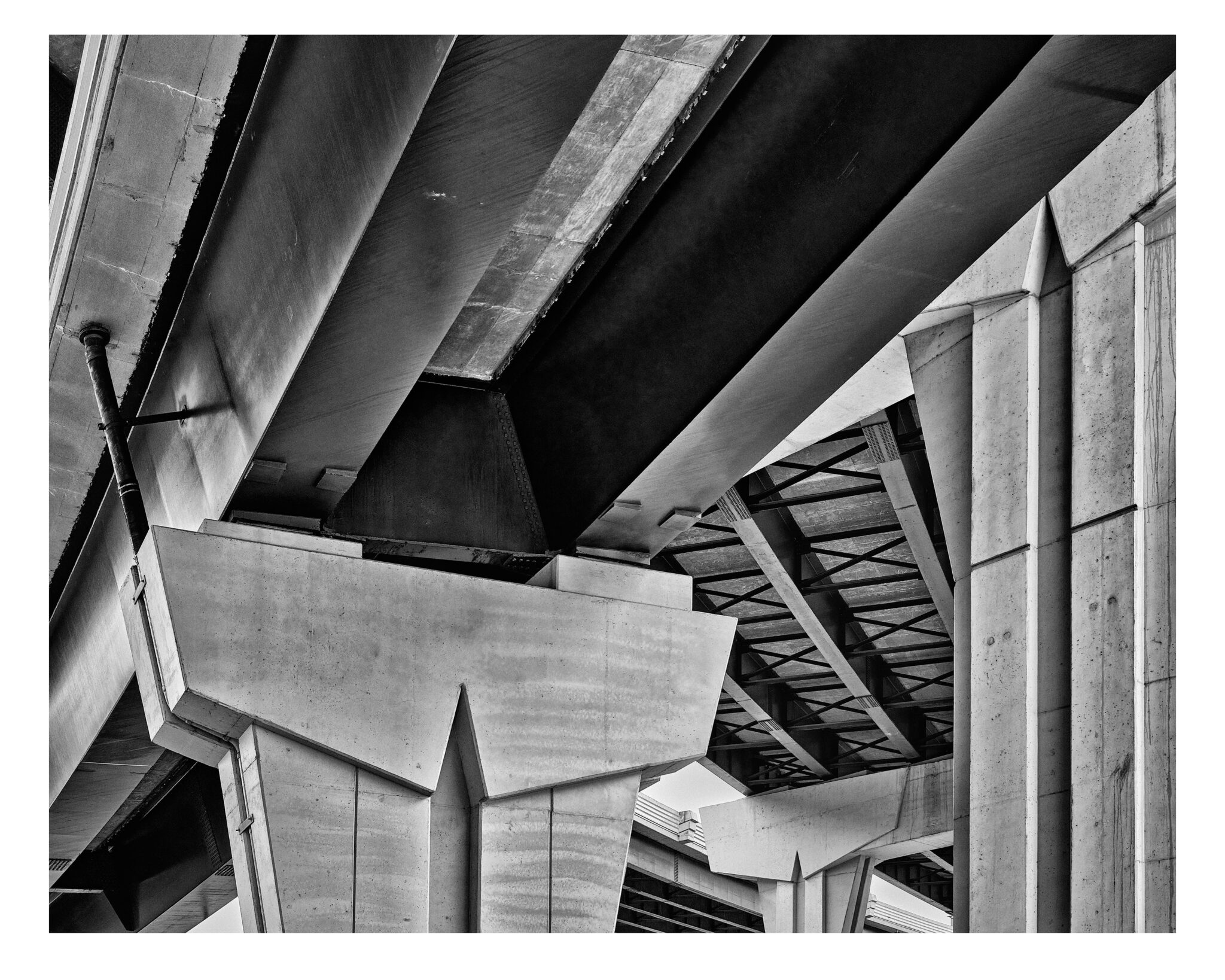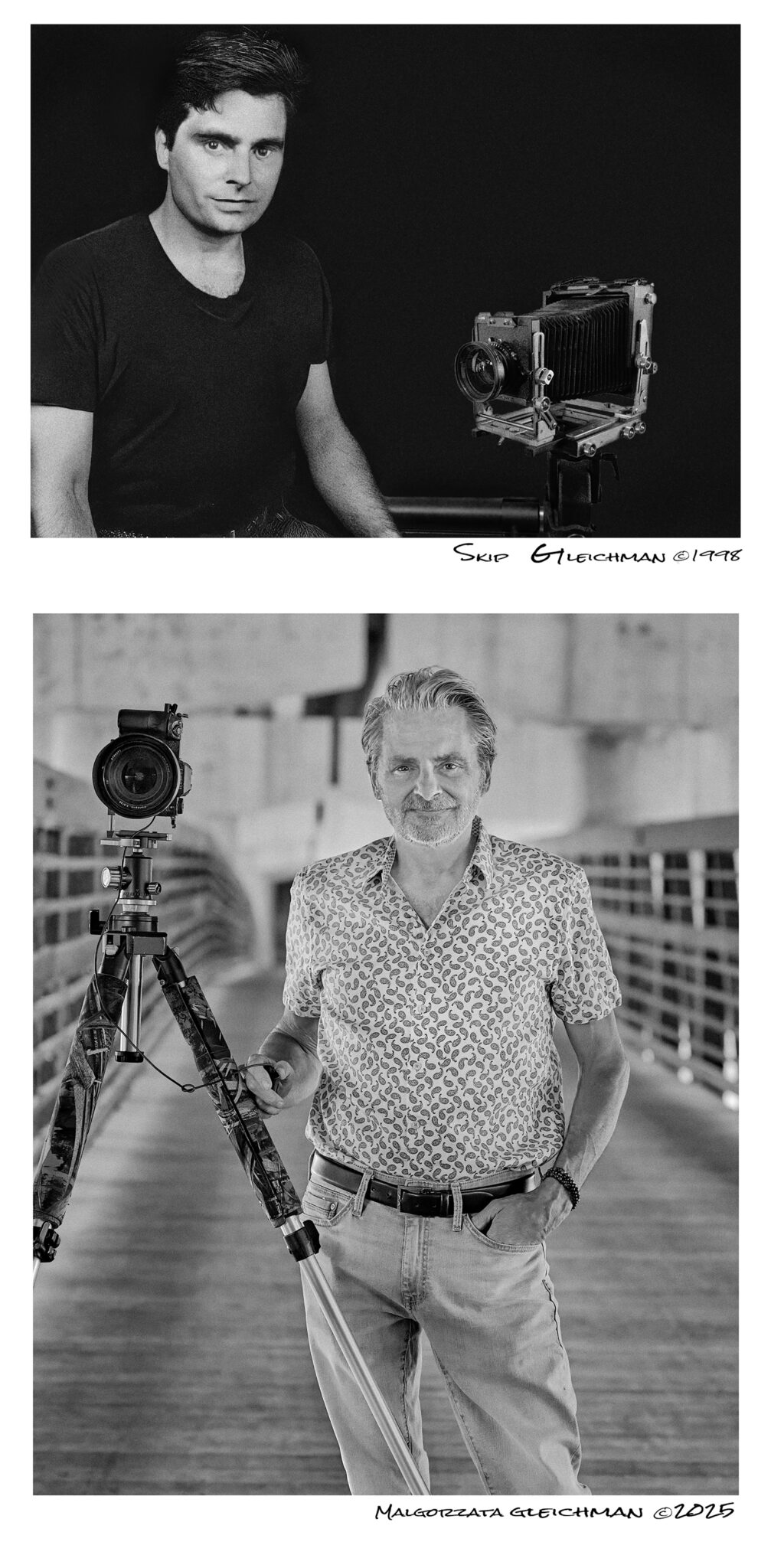- Home
- The Photographer – Vision and Biography

Vision and the Patience Required for Capture
The images here, taken using both film and with high quality digital cameras, were captured to preserve my vision of a certain scene or subject that caught my eye as the moments light and shadow demanded its preservation. My images are all simple “lightscapes”, subjects that have revealed themselves to be extraordinary at a certain moment in time. There are many images on this site and hundreds in my catalog that had to be visited many times until that certain subject or scene was finally revealed by the natural light at that moment of time.
All of the images displayed on Archival Prints are as envisioned and do not contain any composites, added elements or any AI produced scenery or backgrounds. As in the darkroom, years ago, I do manipulate light and shadow, contrast, color balance in order to perfect my initial vision of a scene but not as a means to render it into something else. I come from the film world, a place that could be trusted and from a time when capturing an image was not an easy task. True photography is still not easy as it can often take almost extreme patience, in “waiting for the light” after “discovering” the perfect angle and envisioning the end result. With digital, you do get many tries and instant proofing where film was completely unforgiving and very costly especially when using large format.
All of the images displayed on Archival Prints are as envisioned and do not contain any composites, added elements or any AI produced scenery or backgrounds. As in the darkroom, years ago, I do manipulate light and shadow, contrast, color balance in order to perfect my initial vision of a scene but not as a means to render it into something else. I come from the film world, a place that could be trusted and from a time when capturing an image was not an easy task. True photography is still not easy as it can often take almost extreme patience, in “waiting for the light” after “discovering” the perfect angle and envisioning the end result. With digital, you do get many tries and instant proofing where film was completely unforgiving and very costly especially when using large format.
What I See and that Vision which I Seek to Preserve
The view of my photography may notice a few details what I seek through the lens. The first may be the absolute lack of human beings in my fine art photography. While I appreciate all portraits, street photography and actually once had a film based portrait business, my passion is the inanimate, the still life's I find in nature or in the city, or under the bridge as opposed to on top of it. Back to that capture of light, and the magic it can bring to even the mundane or unnoticed.
The second obvious detail may be the "scenes" and the subjects of my photography. There is a real lack of the grandiose landscape of say, Ansel Adams but rather a more defined and narrowed vision of Eliot Porter. While I am in no way making any comparisons, my vision and passion for capturing images more aligns to the detail of Porter. There are exceptions in a bridge at night or of a scene made too exceptional by light, or fog or darkness, but I do see detail and it is evident in what I call my "intimate landscapes". I have seen this way since my film days and it continues in my digital photography.
My eye is not for all, but I try to find those scenes that may be passed by, stepped over or even driven through without notice and to pay them homage though the use of light and camera.
The second obvious detail may be the "scenes" and the subjects of my photography. There is a real lack of the grandiose landscape of say, Ansel Adams but rather a more defined and narrowed vision of Eliot Porter. While I am in no way making any comparisons, my vision and passion for capturing images more aligns to the detail of Porter. There are exceptions in a bridge at night or of a scene made too exceptional by light, or fog or darkness, but I do see detail and it is evident in what I call my "intimate landscapes". I have seen this way since my film days and it continues in my digital photography.
My eye is not for all, but I try to find those scenes that may be passed by, stepped over or even driven through without notice and to pay them homage though the use of light and camera.


My Work, My Art and the Ethics of Photography
As alluded to prior, my images are captured as seen and have not been manipulated aside from color balance, contrast, brightness and shadow detail. Nothing has been added or changed or generated via computer. And while I hold no judgement about the value of AI as art, it is most definitely not photography. I learned photography with film, shooting it, developing it and printing negatives and transparencies in the darkroom. My images have always been what I actually saw, waited for, envisioned and captured. That said, I do the same manipulations on a PC that I once learned and performed in the darkroom, like burning and dodging, color correction, light balance and contrast correction.
Film made photography "honest" and while I could likely create what was never really there, I myself just can't do that and remain photographically pure. Again, I say that without judgement.
Film made photography "honest" and while I could likely create what was never really there, I myself just can't do that and remain photographically pure. Again, I say that without judgement.
The Photographer
I am Skip Gleichman, the photographer represented here and the founder of Archival Prints LLC. Photography has been my passion since 1990 though my interest in “images” began long prior to actually picking up a camera. I consider myself a pure, non-AI digital landscape photographer with long-standing roots in the “honest” world of large format film and darkroom printmaking. I have been producing fine art photography of urban and natural subjects in both Black & White and Color for several decades. Today, I specialize in detailed, large format images and museum quality limited edition fine art prints from directly captured digital files or drum scans from my film library. I have worn a few professional hats with “photographer” being one among them. I have lived in several eastern US locations, but I am currently a resident of the Chicago area, very near where I began my journey.
Seeing and Patient Photographic Approach
Growing up, I saw scenes and subjects as I do still today but captured them only in my mind’s eye. It was not until 1990 that I was gifted my first manual focus 35mm camera and my photographic journey had begun. That first camera led to discovering the slow, deliberate and patient style of photography that I still prefer today and suited me perfectly through my 4x5 field camera imaging. I have always preferred fixed, rather than zoom lenses on any system as it forces me to move, to see and to study any scene if initially find of interest. Using a tripod exclusively, an image can take minutes or what may seem an eternity to some. And though I only use digital cameras today, I photograph as if I am still using my 4x5 film camera as it allows me to study and truly see the subject that I am photographing.
From Film & Darkroom to Today, Digital Capture, File Preparation & Printing
Having spent years working in a commercial darkroom, it was a natural fit when I first started developing film and printing my work at Southern Illinois University as a Cinema and Photography Major (among three separate majors at that time). I later had my own professional style darkroom, printed both B&W Fiber and Cibachrome (Ilfochrome) prints from color transparencies. Through years of experience, I became a master printmaker of my fine art prints as well as B&W portraits when I operated a portrait studio in the early 2000’s. I very much enjoyed the magic of the darkroom, and loved the process of bringing a print to life, though it was never an easy task for a perfectionist.
The move to digital was a waiting game for me. Though I did get into a digital system after selling my beloved film cameras and lenses, the quality was not there, not even close to what I had been used to in terms of the size and quality of digital files. It was years until I was able to approach the detail of film within digital files that allowed me to print on a larger scale and be satisfied with the results. My latter high resolution full frame cameras and then my medium format system finally allowed me to resume seriously capturing subjects rather than only “seeing”.
My previous darkroom experience has been very helpful in the transition to preparing digital print files whether they were pure digital images or the huge digital files of my film and transparencies produced with a drum scanner. I remain “pure” as a photographer as I do not change or add to or otherwise manipulate any of my images. Aside from stitching images of a scene together to create massive and extremely detailed large scale print files, my images are exactly what I saw and envisioned through the lens.
Today, my digital “post processing” of dodging, burning, contrast adjustments, light, shadow and color correction is similar to darkroom work, and it eliminates my exposure to the chemicals of a wet darkroom. I have tons of nostalgia for film, but I am currently 100% digital. As for digital print quality, the papers, inks and printers had to play serious catch-up to become truly “archival”, rivaling what I previously produced in the darkroom. We are there now, and here I am, again.

“To know ahead of time what you’re looking for means you’re then only photographing your own preconceptions.”
― Dorothea Lange
